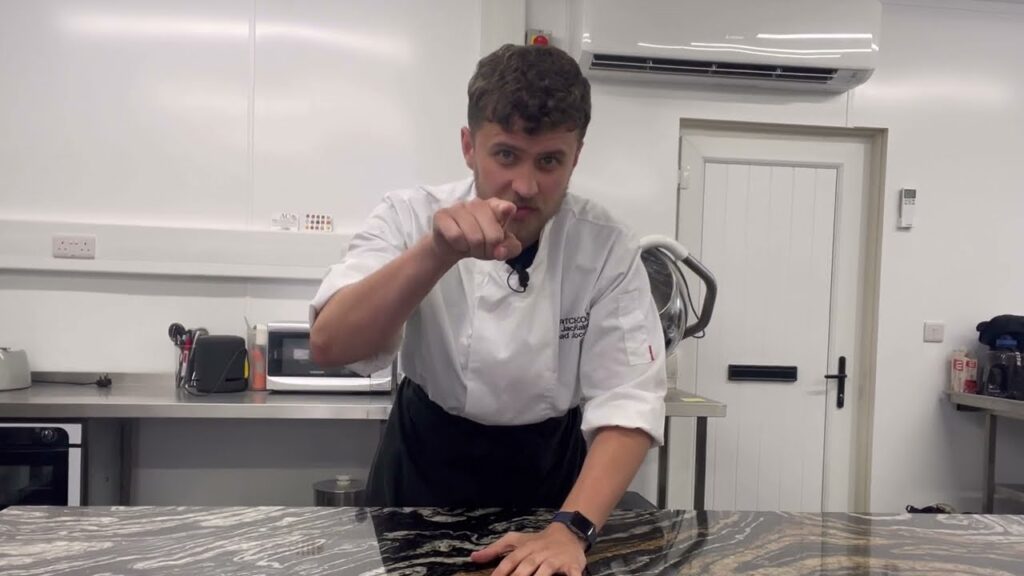Chocolate is more than just a sweet treat; it’s an art form. The perfect chocolate has a glossy shine, a satisfying snap, and a smooth, melt-in-your-mouth texture. These qualities are achieved through the process of tempering, which involves melting, cooling, and reheating chocolate to form stable crystals. While this may sound daunting, with the right knowledge and techniques, anyone can successfully temper chocolate at home. In this comprehensive guide, we will delve into the science behind tempering, essential tools and ingredients, step-by-step tutorials, troubleshooting tips, and creative uses for tempered chocolate. Get ready to elevate your chocolate creations to a professional level.
Understanding the Science of Tempering Chocolate
To understand tempering, we must first understand the composition of chocolate. Chocolate is made up of cocoa solids, cocoa butter, sugar, and sometimes other flavorings. Its texture and appearance are determined by the arrangement of its cocoa butter crystals. These crystals have different melting points, and their structure dictates how the chocolate behaves.
Untempered Chocolate
Untempered chocolate has a mix of unstable crystal forms, resulting in a dull, soft appearance, a grainy texture, and a tendency to bloom (white streaks) over time. When melted, untempered chocolate will not set properly, resulting in a messy, sticky, and unappealing product. This is because the unstable crystals melt at different temperatures, causing the chocolate to cool unevenly and creating an inconsistent structure.
Tempered Chocolate
On the other hand, tempered chocolate boasts a stable structure of primarily beta crystals, which are the most desirable form. These crystals melt smoothly, offer a pleasing snap, and create the signature glossy shine. When tempered chocolate cools, the beta crystals form a tight network, resulting in a firm and stable product. This allows the chocolate to hold its shape and maintain its texture, even at room temperature.
The key to achieving tempered chocolate lies in controlling the temperature and manipulating the crystals. This is where the techniques of tempering come into play.
Essential Tools and Ingredients for Tempering

Before we dive into the specific methods of tempering, it’s important to have all the necessary tools and ingredients on hand. These include:
- A double boiler or a heat-safe bowl set over a pot of simmering water
- A thermometer (preferably an infrared or candy thermometer)
- A rubber spatula
- A heat-resistant bowl
- A marble or granite slab (optional)
- A bench scraper or metal offset spatula (optional)
- High-quality chocolate (dark, milk, or white)
- A clean and dry work surface
Note: It’s crucial to use high-quality chocolate for tempering. Lower quality chocolate may contain unstable or inconsistent cocoa butter crystals, making it difficult to achieve proper tempering results.
Step-by-Step Tutorial for the Seeding Method

The seeding method of tempering involves adding small pieces of tempered chocolate to melted chocolate, causing the stable beta crystals to form and replicate throughout the mixture. This is the most commonly used method for home tempering and yields consistent results.
Step 1: Prepare the Chocolate
Start by chopping the chocolate into small, uniform pieces. This will ensure that they melt evenly and quickly. Place two-thirds of the chocolate in a heat-safe bowl and reserve the remaining third for seeding.
Step 2: Melt the Chocolate
Fill a saucepan with an inch of water and bring it to a gentle simmer. Place the heat-safe bowl on top, making sure it doesn’t touch the water. Stir the chocolate occasionally with a rubber spatula until it is completely melted and reaches the desired temperature according to the type of chocolate you’re using (see table below).
| Type of Chocolate | Ideal Temperature |
|---|---|
| Dark | 118-120°F |
| Milk | 113-115°F |
| White | 105-110°F |
Note: It’s important to use a thermometer to ensure that the chocolate reaches the correct temperature. Going above or below these temperatures can result in failed tempering.
Step 3: Seed the Melted Chocolate
Remove the bowl from the heat and dry the bottom with a towel to prevent any steam or water droplets from getting into the chocolate. Add the reserved third of chopped chocolate to the melted chocolate and stir continuously. The residual heat will melt the pieces and bring down the overall temperature of the mixture.
Step 4: Check the Temperature
Continue stirring until the chocolate has completely melted and reaches the ideal temperature according to the type of chocolate you’re using (see table above).
Step 5: Test the Tempered Chocolate
To test if the chocolate has been properly tempered, dip a clean knife or spatula into the mixture and place it in the fridge for 3-5 minutes. If the chocolate sets and has a glossy shine, then it is properly tempered. If it appears dull, streaky, or has a soft texture, it may need further seeding and stirring.
Step 6: Use the Tempered Chocolate
Once the chocolate is properly tempered, it’s ready to be used in your desired recipe. You can either pour it into molds, dip fruits or confections, or spread it on a surface to create chocolate decorations. Be sure to work quickly as tempered chocolate sets faster than untempered chocolate.
Troubleshooting Common Tempering Issues
Tempering chocolate can be a delicate process, and even the slightest mistake can lead to tempering issues. Here are some common problems and their solutions:
Chocolate won’t set
If your tempered chocolate is not setting, it could be due to one of the following reasons:
- The chocolate was overheated: If the chocolate reaches a temperature above the ideal range, the beta crystals can break down and lose their structure. In this case, you will need to start the tempering process again with new chocolate.
- Water got into the chocolate: Even the smallest amount of water or steam can cause the chocolate to seize and become unusable. Make sure all equipment and surfaces are dry before working with chocolate.
- The room temperature is too warm: Temperatures above 80°F can cause chocolate to melt or bloom. It’s best to work in a cool, dry room or use air conditioning to maintain a consistent temperature.
Chocolate has a dull appearance or white streaks (bloom)
If your tempered chocolate has a dull, grayish appearance or white streaks, it could be due to one of the following reasons:
- The chocolate was under-tempered: If the temperature of the chocolate wasn’t brought down enough during the seeding process, there may be an imbalance of unstable crystals. Try adding more seed chocolate and stir until the correct temperature is reached.
- The chocolate was exposed to humidity: Humidity can cause sugar and cocoa butter to absorb moisture from the air, resulting in a dull appearance or bloom. Avoid tempering on rainy or humid days, and store finished products in an airtight container in a cool, dry place.
- The chocolate was stored improperly: If the chocolate was exposed to high temperatures or extreme temperature fluctuations, it can affect the crystal structure, causing blooming. Always store tempered chocolate in a cool, dry place away from direct sunlight.
Creative Uses for Tempered Chocolate in Desserts and Confections
Now that you’ve mastered the art of tempering, it’s time to put it to use in some delectable creations. Here are just a few ideas to get you started:
Chocolate Covered Strawberries
A classic dessert, chocolate covered strawberries are an elegant and simple treat that is perfect for any occasion. After tempering the chocolate, dip fresh strawberries into the mixture and place them on a parchment-lined baking sheet. Let them set in the fridge for about 10 minutes, then drizzle with more tempered chocolate for a decorative touch.
Homemade Truffles
Impress your friends and family with homemade truffles filled with creamy ganache. Once you’ve tempered the chocolate, pour it into molds, leaving room to fill with your desired filling (ganache, caramel, peanut butter, etc.). Chill the mold in the fridge for 10-15 minutes, then finish by pouring more tempered chocolate over the top to create a solid shell.
Chocolate Curls
Create beautiful chocolate curls to decorate cakes, cupcakes, or other desserts. After tempering the chocolate, spread it evenly on a cool, dry marble or granite slab using a bench scraper or metal offset spatula. Let it set for a few minutes until it’s no longer tacky to the touch but still flexible. Use a metal scraper or knife to gently scrape the chocolate into curls.
Conclusion
Tempering chocolate can seem like a daunting task, but with the right tools and techniques, anyone can achieve professional results at home. Remember to use high-quality chocolate, control the temperature, and manipulate the crystals through seeding for the best results. And don’t be afraid to get creative and experiment with different uses for tempered chocolate in your desserts and confections. With this comprehensive guide, you can now confidently add tempered chocolate to your culinary repertoire and take your chocolate creations to the next level. Happy tempering!

